“It’s a genuine copy of a fake Dior.”
—Comedian Alan Sherman (1962)
Early this month, the owners of Philip Johnson’s AT&T building, now under consideration for protection from New York City’s Landmarks Preservation Commission, began to demolish the tower’s monumental lobby. Those in favor of saving the 1984 post-modern icon were caught by surprise. Though a landmark designation would be for the exterior only, the controversial plans by Snøhetta for renovating the base of the building are under review and seemingly would be affected by changes to the existing lobby. Yet this latest flap is just one more distraction from a much larger question: Is the original architecture of the AT&T building even worth saving?
Like it or not, the AT&T building is an influential work of architecture. As such, there are those who make an argument for preserving the building or, at most, modifying it with respect to the original design. Snøhetta’s less deferential original proposal prompted the rush to grant the building landmark status. But before doing so, the Landmark Commission needs to ask a fundamental question: For what reason should this building be preserved? What, in their own mandate, is its “special character, special historical or aesthetic interest, value as part of the development, heritage or cultural characteristic of the city, state or nation”? Yet even if the building fulfills the commission’s own criteria, it doesn’t mean it is good architecture.
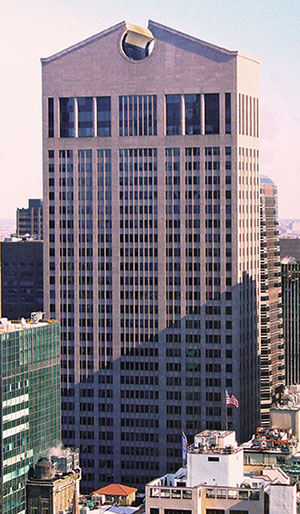
While very few buildings are “works of art” like, say, Michelangelo’s Laurentian Library, Borromini’s San Carlo alle Quattro Fontane, Schinkel’s Altes Museum or Corbusier’s Ronchamp, those that are not can still be interesting, intelligent and, occasionally, even beautiful. Some may exemplify qualities that are fashionable, which is why they can come back into vogue only to disappear into critical oblivion again—they represent style. And although style can tell us something about the time in which a building was conceived, it alone cannot produce something of lasting significance. Such buildings, for the most part, do no harm.
But that’s not true of the AT&T building. Why? Because it pretends to be more than it is. Its supporters, imagining that there is something extraordinary about the building, perpetrate an idea that instead only serves to validate kitsch. Their argument is not that the building is good architecture, but rather that it is an important postmodern building. In other words, they are defending a style and, like many examples of this faux historicism, this is one without any substance behind its image. Its proponents defend the indefensible—Johnson’s shallow and disingenuous reduction of history to quotation marks. It is an affront to both tradition and the avant-garde. The building is neither interesting, intelligent nor beautiful. To declare it substantive is to wrongly put it into the company of significant work.
At any given moment in Johnson’s long career, he was keenly aware of what was au courant in architecture. Yet he mostly produced only simulacrums—second-rate and superficial buildings—because, despite the illusion he worked so hard to create, he was a glib and lackluster architect. He did, however, have the ability to get things built and find his way into history by riding the coattails of someone else’s ideas. He did this by inviting into his world whomever was in vogue at the time, and many of them accepted. They knowingly gave him the false status of maestro in exchange for his power to get them work.
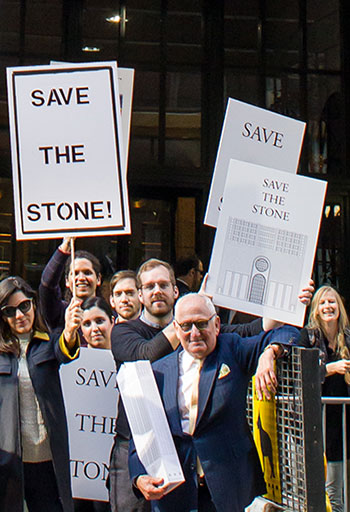
We should not confuse celebrity with quality, and facility with meaning. (In that regard, we have Johnson, in part, to thank for the current condition of “star” architects.) Buildings need to speak for themselves. The AT&T building’s supporters find it iconic, irreverent, and a return to ornamentation. Robert Stern has called it “one of the most important buildings of the last third of the century,” and critic Mark Lamster wrote on Twitter, “AT&T is one of the most significant buildings of the 20th century.” But in my view, they give little convincing evidence of why they think any of this is true.
What does the building actually represent? It is a box decorated with a handful of false historical references that wouldn’t pass muster in a first-year architecture class. The ornamentation to which its defenders refer is confined to a Chippendale top that reduces history to a pun; an oversimplified, inelegant and unwelcoming base that owes little to what it supposedly references (other than its Neoclassicism that, unfortunately, serves as a reminder that Johnson was, for years, an enthusiastic Nazi propagandist); and a great deal of badly detailed stonework. This thinly conceived “ornamentation” is applied thoughtlessly on a grand scale, lacking both nuance and relevance to anything. The building was a bad one-liner when completed and has remained so ever since. Like every commercial high-rise, it is an exercise in squeezing every usable square inch out of the site and then adding “architecture” to the pre-determined volume. Even worse, this building was granted additional square footage for disingenuous promises of public spaces that never worked and have now all but disappeared. The 1979 Time magazine cover of Johnson holding the model of the building says it all. There is little more to be discovered in the built work. The model and the building are all image—no subtlety, no second reading. Your first impression is your last.

The building and its defenders conflate slapstick with satire and histrionics with history. Rather than being cheeky, it’s banal. The model was cute but, unfortunately, real buildings last a long time. To highlight how puerile Johnson’s work is, one need only compare it with James Stirling’s Neue Staatsgalerie, completed the same year, to find an example of the exquisite use of history, both whimsical and profound.
By the Landmark Preservation Commission’s own mandate, AT&T’s contributions to our culture are questionable at best. Those who believe it important do injustice to serious architecture. They devalue the good and lower our standards. Even if the commission does find some reason to protect the AT&T building, neither time nor the special designation will transform it into something deserving respect.


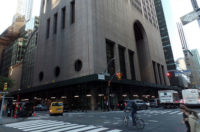
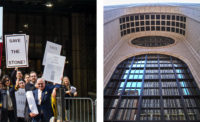
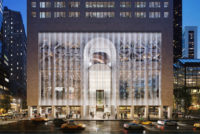
Post a comment to this article
Report Abusive Comment